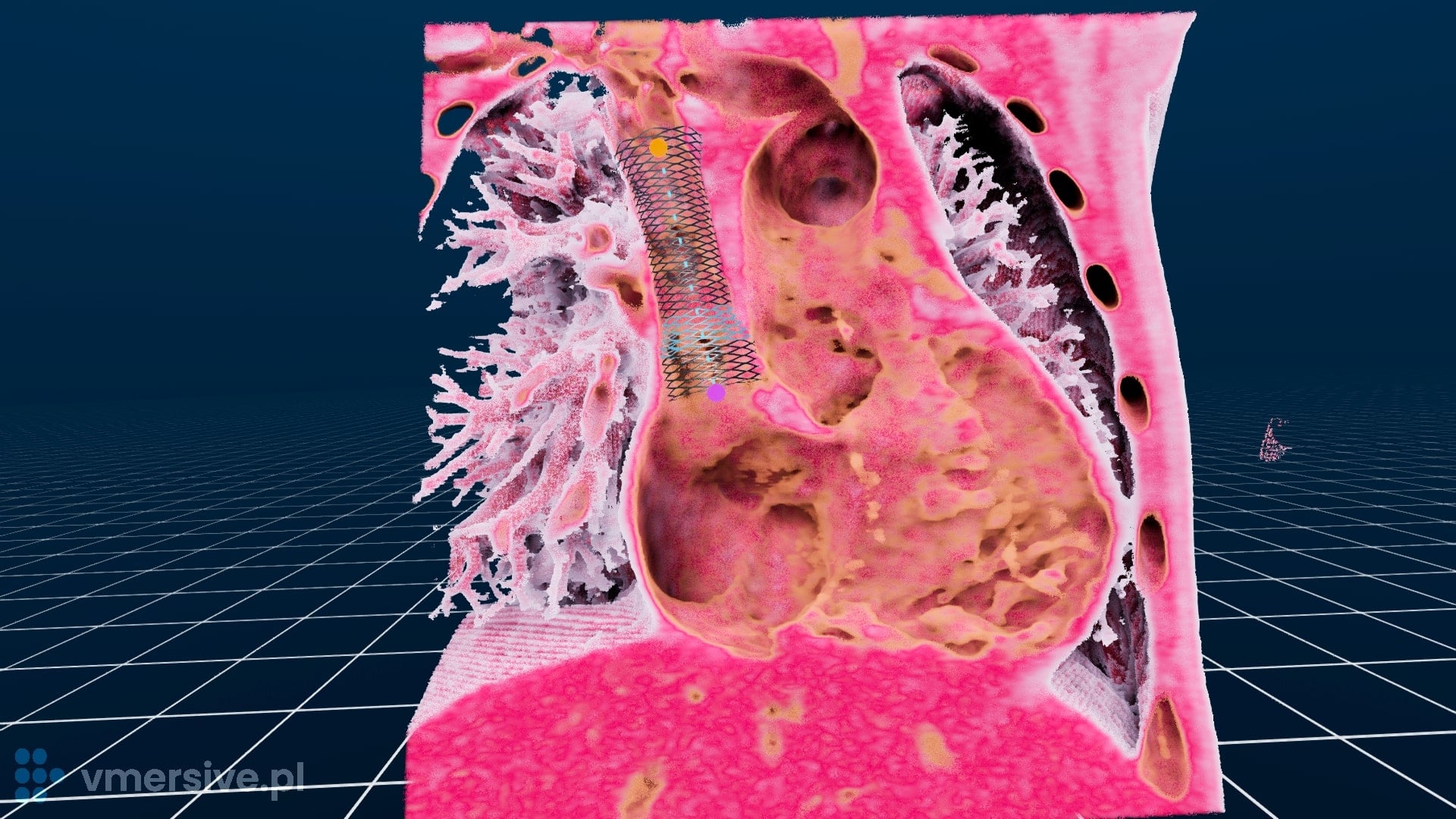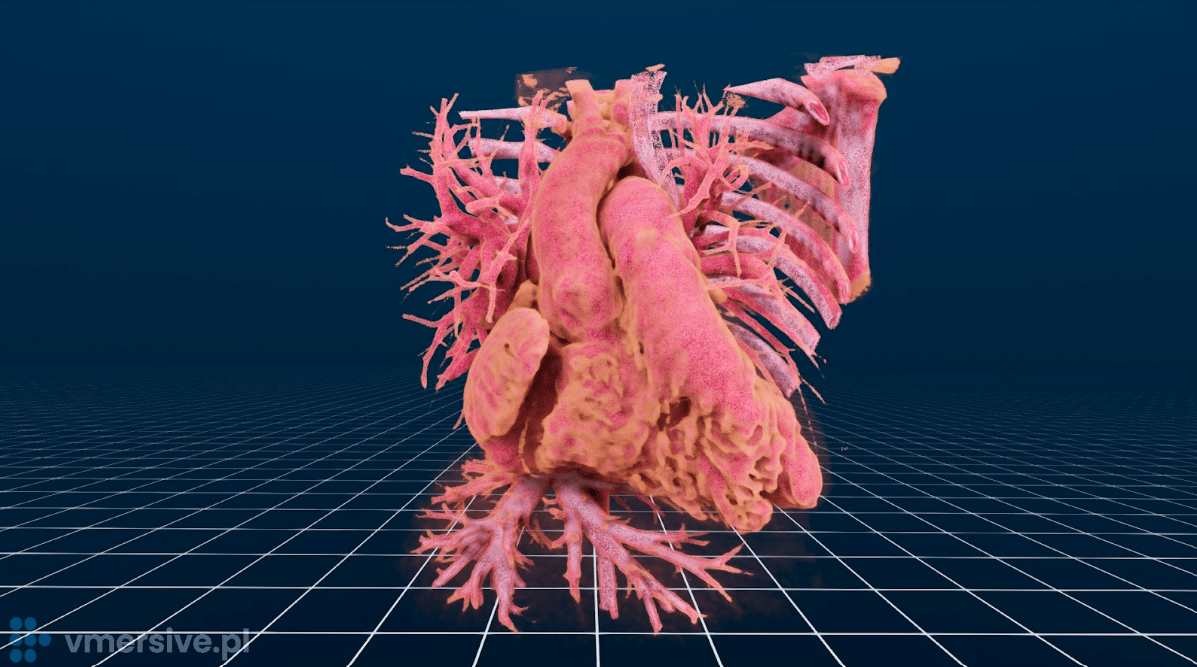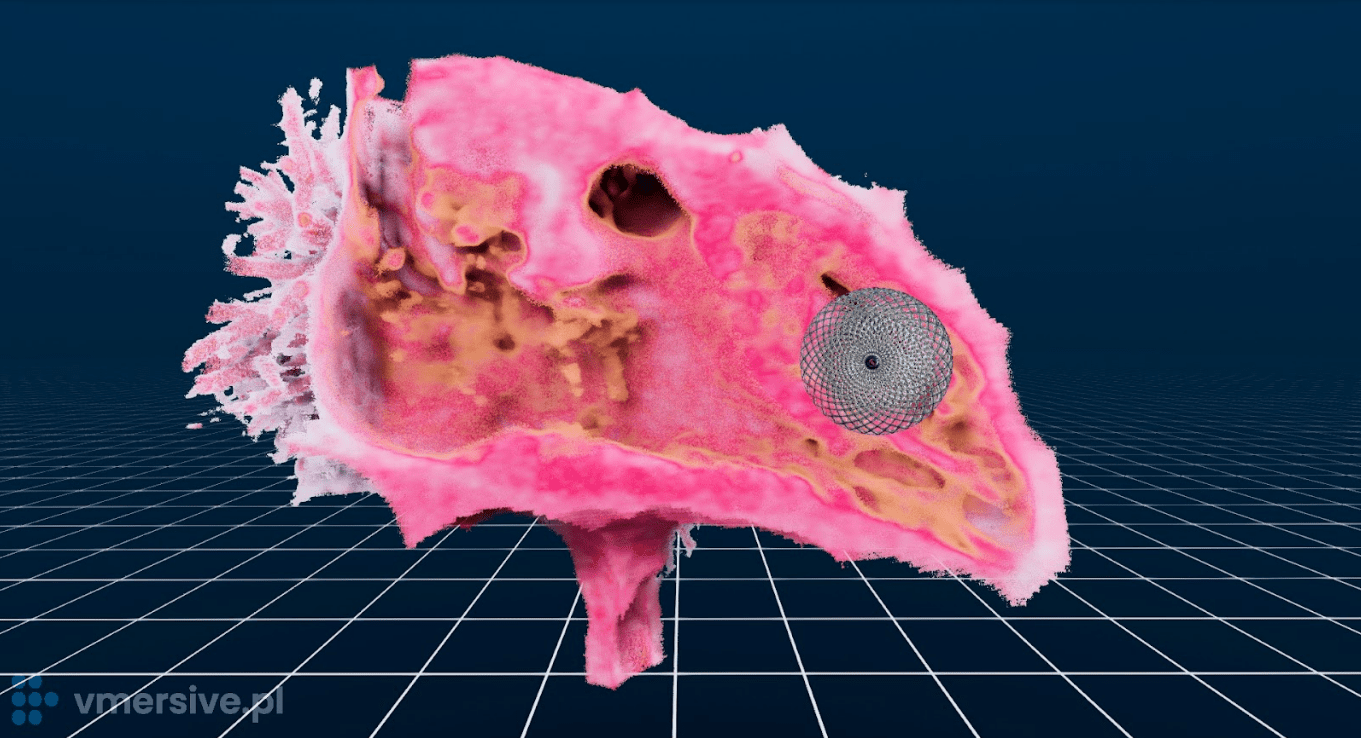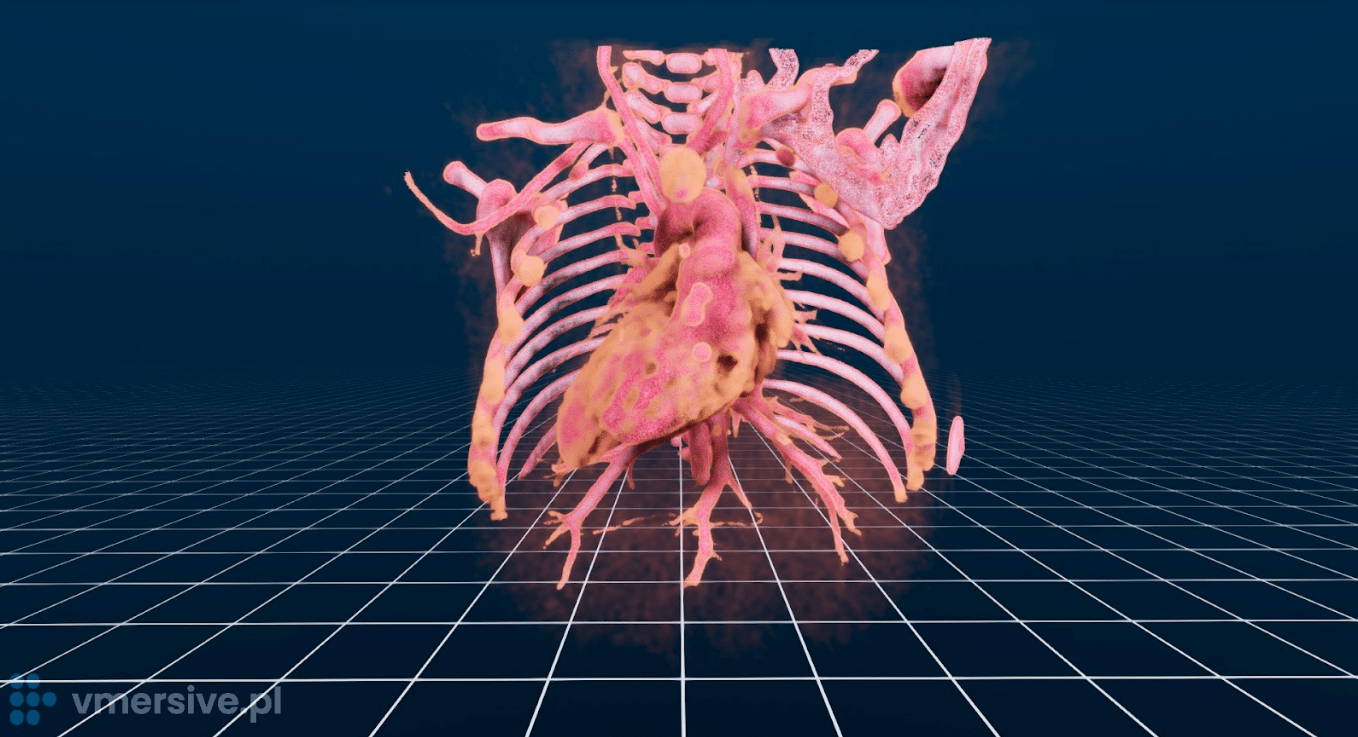
No Manual Segmentation
Automatic 3D reconstruction of any CT, MR or 3D Echo study in DICOM format. Instantaneous start of the simulation.
Library of Medical Devices
Integrated sizing sheets from major manufactures: stents with foreshortening tables, valves, VSD occluders, conduits.
Advanced Measurments
Accurate length of a line, curve, contour or value of an angle. Volume of any 3D region e.g heart ventricle.
Dynamic Studies
Full support of functional and multi-phase 4D studies to improve the realism of patient anatomy images.
Full Anatomical Context
One click to observe heart interior and vessels, implanted devices, calcifications, airways or MPR.
Report Generation
Save the configuration of medical data, devices, measurements, screenshots and share it with the team.
Created Specifically For Doctors.
Previous VR Experience is not needed.
The process is simple: import DICOM files, wear a VR headset, and begin analyzing. Every interaction, such as slicing, cutting, measuring, or customizing a stent, has been carefully considered for ease of use.
In addition to the free trial we offer a free online training to help new users maximize their experience with the software.
Interventions & Surgeries Workflows
TPVI
CoA
SVD
DORV
VSD
Complex TGA
LVAD
Transcatheter pulmonary valve implantation
Coarctation of Aorta

Sinus Venosus Defect

Double outlet right ventricle (DORV)

Ventricular Septal Deffect

Complex Transposition Of The Great Arteries
LVAD – HeartMate 3 implantation
Recommended by experts
Partners & Testimonials
